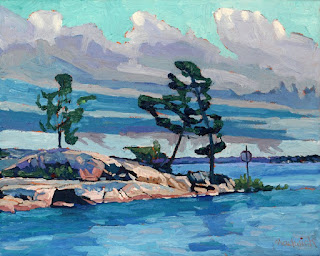I used this saying a lot to emphasize the importance of watching the sky and understand what it was saying. Cirrus or cirrostratus is associated with the leading edge of a warm conveyor belt which is the precursor of a weather system. There are many variations in this saying but they all come down to observing the cirrus. The rings around the moon for example are corona resulting from the moonlight diffracting through the ice crystals associated with cirrostratus. Simply, there was another autumn storm on the way.
The patterns in the cirrus told some more details about the weather story. There were lines of cirrus stretched across the sky in long deformation zones. The deformation zones were the atmospheric smoke rings around the warm conveyor belt. The icy virga from the mares' tails wafted in the wind shear. The humid upper reaches of the warm conveyor belt kept these ice crystals from quickly sublimating and the trails were teased into long strands as the ice crystals fell earthbound. The clouds revealed the relative wind velocities and these were part of the signature of the approaching storm.
For this and much more art, click on Pixels. Thank you.
The patterns in the cirrus told some more details about the weather story. There were lines of cirrus stretched across the sky in long deformation zones. The deformation zones were the atmospheric smoke rings around the warm conveyor belt. The icy virga from the mares' tails wafted in the wind shear. The humid upper reaches of the warm conveyor belt kept these ice crystals from quickly sublimating and the trails were teased into long strands as the ice crystals fell earthbound. The clouds revealed the relative wind velocities and these were part of the signature of the approaching storm.
For this and much more art, click on Pixels. Thank you.

















